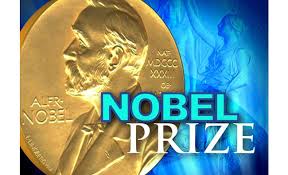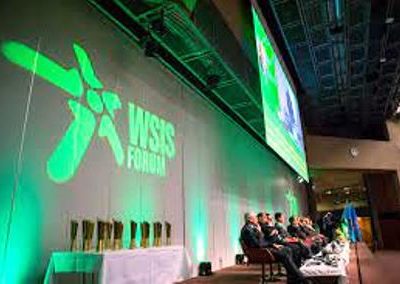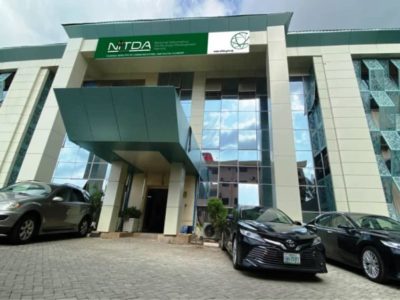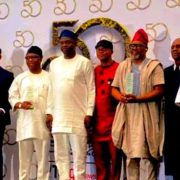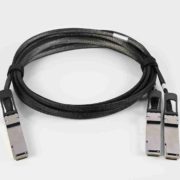The Royal Swedish Academy of Sciences awarded the 2020 Economics Nobel Prize to Stanford University’s Paul R. Milgrom and Robert B. Wilson “for improvements to auction theory and inventions of new auction formats.”
This year’s award puts telecommunications in the public policy spotlight. In a mere generation, spectrum auctions have demonstrated telecom operators’ ability to use scarce resources efficiently and to contribute significantly to the public treasury.
As the Royal Academy rightly observes, market-based allocation methods like auctions are preferable to administrative allocation (e.g. beauty contest and lottery). However, the Academy downplayed the shortcomings of auctions. In practical terms, some spectrum auctions have reduced infrastructure investment. Governments and bidders have gamed the auctions, creating perverse outcomes for consumers.
In many countries, particularly in the European Union, spectrum licenses have short duration, leading to dire situations in which licenses expire and cannot be renewed. The findings of the 2020 Nobel winners, if applied, could solve these problems, but it requires political discipline. Strand Consult sees the award as a message to governments around the world to improve the practice of spectrum allocation, particularly as applied to auction rules, spectrum repurposing, unlicensed spectrum, and federal spectrum holdings.
Problems with spectrum auctions
Spectrum auctions are frequently billed as good medicine, but few focus on the side effects. In many countries, spectrum auctions are designed to maximize the price for frequencies, leaving little money left to build networks. This has negative impact on infrastructure investment. Realizing the revenue that auctions can deliver, corrupt politicians, civil servants, and other political actors, have influenced the design of auctions to serve their personal gain, frequently colluding with bidders.
Many politicians and regulators, particularly with greenfield spectrum, cut the life of the license short to force operators to rebid for frequencies, leaving many operators with built networks but no right to operate them. This technique is like a coin-operated life support machine in which the patient must insert money to stay alive. As such, the operator must continue to pay for the spectrum rights or abandon its historical investment and value of accumulated customer base. Unlike the US which offers licenses without expiration, many European countries only offer licenses for short periods of time, 15, or 20 years. This means that European operators have less money to build the actual networks on the ground as they must keep paying for their right to the airwaves.
Consider what happened in Norway with Tele2 when its license ran out in 2013. This operator with 18.6% in market share lost the bid for spectrum. ICE acquired Tele2’s spectrum on the auction for NOK 705 million (€84 million). ICE furthered gained another €130 million from remedies issued when Tele2 sold their customers to Telia.
Spectrum auction rules differ by country and are influenced by various policymakers. On the one hand are policymakers responsible for telecom infrastructure who want to ensure that the people have access to good networks; on the other, are policymakers for the national economy who want to maximize money to the treasury or financial ministry. Experience shows that the finance ministers tend to win over the infrastructure ministers.
Policymakers have learned that there is good money in offering an absurd number of spectrum licenses to a few new entrants. This has led to instances of corruption, like Telia in Uzbekistan and Telenor, Etisalat and Batelco in India. The Anti-Corruption Resource Center and Transparency International documented spectrum corruption in the 12 countries in Southern Africa.. Fortunately, most operators have learned from these mistakes and avoid them. Operators and Nations have also implemented anti-corruption tools.
Spectrum auction terms and conditions also vary by country. While some frequencies are offered on a flexible or technology-neutral basis, others can only be used for preferred technologies. Consider the case of the 3G auctions in 2000 in Europe when governments required that industry deploy 3G/UMTS. This combined with a lot of hype led to a telecom bubble, costing shareholders billion of euros, and leading to a sector recession following the auctions. While governments made money, the European industry was set back 5 years. One can debate to what degree the operators were coerced to participate in the auction, or whether they believed the hype that consumers would pay a premium for mobile broadband and video call´s to cover the operators’ investments. It turns out there was a huge gap between what consumers were willing to pay and what the spectrum cost.
In addition to use and time, spectrum licenses are regulated on the frequency, geographic area, size of bidder, and so on to maximize preferred political outcomes, which are not necessarily aligned with the maximizing consumer welfare. In general, while the economics clearly shows that market-based spectrum allocations are preferable to administrative ones, there are still risks associated with an auction mechanism that enables large sums to money to be funneled to the government from a few private actors. As such, continuous improvement of the design and practice of spectrum auctions improves outcomes for all people.
Academy remarks on improved spectrum auctions and governments
The Academy declared that spectrum auctions “have benefitted sellers, buyers and taxpayers around the world” and recognized the pioneering applications of the work of Milgrom and Wilson at the Federal Communications Commission (FCC) beginning in 1993. They further observed of the winners, “Their best-known contribution is the auction they designed the first time the US authorities sold radio frequencies to telecom operators. Radio frequencies that permit wireless communication – mobile phone calls, internet payments, or video meetings – are limited resources of great value to consumers, businesses and society. These frequencies are government owned, but private actors can often utilise them more efficiently.” In fact, William Vickrey proposed the spectrum auction in 1961, but it took the FCC decades to conduct one. Vickrey was awarded the Nobel Prize in 1996 for his work, and the sealed-bid Vickrey auction is named for him.
The Academy describes the folly of the FCC’s other methods of allocation, notably “beauty contests” which “meant that telecom and media companies spent huge amounts of money on lobbying. The revenue generated by the process was limited, however.” Indeed the FCC still uses beauty contests today, most recently designating a whopping 1200 MHz in the 6 GHz band as “unlicensed”, a misguided giveaway to the richest internet platform companies which can well afford to pay for the use of spectrum.
The Academy also observes that the FCC tried lotteries, which it describes as a “random” allocation process that neither raised revenue for the government nor facilitated the building of networks at scale. As the lottery was conducted at the local level, operators could not piece together a coherent plan to cover the entire country. Indeed, many small license holders made quick money by selling their licenses to firms which ultimately consolidated into Verizon, AT&T, and T-Mobile today.
The Academy recognized the application of Milgrom and Wilson’s work in three vital areas of spectrum design: rules, the item to be auction, and uncertainty. They showed that the auction’s rules are critical, whether bids are open or closed, how many times participants can bid, and at which price the winner pays, whether their own bid or the second-highest bid. They also observed he importance of the auctioned object and how different bidders value it. They noted the role of uncertainty and how bidders’ information may differ about the object’s value. Given these variables, Milgrom and Wilson designed new auction formats to improve decisions by making information known. They developed the simultaneous multiple round (SMR) auction implemented by the FCC in 1994 and which has become the mainstay for FCC auctions as well as in electricity and natural gas markets. Milgrom and Wilson added game theory to their inquiry to model how different actors behave strategically when they each have access to different information and subsequently improve auction design to reduce the opportunities for manipulation by bidders.
Milgrom and Wilson studied spectrum auctions for decades and improved their design by incorporating the strategic behavior of bidders. Wilson observed that auctions for a specific object have a “common value”, an amount not known in advance, but in the end, is the same for everyone. Wilson also observed what he called the “winner’s curse”, the bidder’s fear of paying too much and consequently bidding below the common value and losing the auction. Studying auction behavior and prices, Milgrom evolved auction theory with notion of the bidder’s “private value”, noting that the format of the auction can bring greater than expected revenue as bidders learn about the others’ estimates. Milgrom wanted to see how the problem of the winner’s curse could be mitigated. He observed that the object has both a common value and a private value and explored how different formats addressed this problem.
Milgrom advised the FCC on the design of the groundbreaking incentive auction in 2012 to repurpose spectrum for higher value uses by incentivizing broadcasters to relocate with auction revenue payouts. It consisted of an auction of two rounds. In the first round, the spectrum is bought from current license holders, and in the second, the spectrum is sold to actors which can manage the spectrum more efficiently.
The Academy recognized that operators have effectively sold frequencies amongst themselves, creating a viable secondary market. However, this occurred only after the first allocation by the FCC, which failed to capture revenue for the government. The SMR auction format provided the important innovation of making spectrum available for the entire US in one go. The auction design of starting with a low price and repeated bidding overcame uncertainty and the winner’s curse. The Academy notes that the first auction in July 1994 sold 10 licenses in 47 bidding rounds for $617 million dollars, money the US government would otherwise have forgone in other kinds of allocation. The Academy reports that spectrum auctions have delivered more than $120 billion to the US Treasury from 1994–2014. The global adoption of spectrum auction adds another $200 billion.
The Academy recognized Milgrom’s Combinatorial Clock Auction in which operators bid on “packages” of frequencies, rather than individual licenses. It requires computational capacity, as the number of possible packages grows very quickly with the number of frequencies for sale. However, this expertise is increasingly available with improved software and practice across industries. Notably Milgrom proposed the Flexible Use and Efficient Licensing FUEL for 5g private auction model for the FCC’s C-Band proceeding for the valuable frequencies in the 3.7-3.98 GHz Band. It was designed to be fast (2-4 weeks), fair to small and large bidders alike, and flexible to the bidding packages. It offered 180MHz (9 blocks with 20 MHz each) on 406 partial economic areas (PEA) basis, areas small enough to allow small bidders to participate and large enough to achieve critical mass of licenses for an effective auction. Milgrom notes that he engineered the design to overcome the problem that traditional public auctions take years of procedural deliberations and months of software coding, bidder training, and evaluation. All the same, the FCC rejected this innovation in favor of a public auction to take place in December 2020, effectively rewarding incumbent wireline providers which have sought to delay the rollout of 5G as it is disruptive to their business. Fortunately, the FCC is moving forward on making more mid-band spectrum.
Nobel insight for government spectrum
Most spectrum allocations are still made by government, not the market. Notably governments reward state-owned enterprises with prime spectrum as China did for 5G. We also see that many countries leave large amounts of valuable spectrum under-used, as is the case with the Department of Defense and other federal actors sitting on 70 percent of the beachfront in the US, spectrum which industry would pay billions for and which could drive trillions of dollars of value to the US economy. As such, the there is a great opportunity to apply Milgrom and Wilson’s work in the future and make better use of government spectrum.
Strand Consult supports evidence-based policy making to improve quality of life through telecommunications. For years, Strand Consult has conducted research partnerships with Aalborg University, a university ranked by U.S. News and World Report as 4th in the world for its overall engineering program and 2nd for Electrical and Electronic Engineering. Strand Consult’s Senior Vice President Roslyn Layton earned her PhD in the economics of the mobile industry there, and today, is a Visiting Researcher in the Department of Electronic Engineering. She was invited to testify in the US Senate about improving the management of federal spectrum. Her testimony offers a history of federal spectrum management, a review of the pioneering work of another leading Nobel prize winner Ronald Coase, and the ongoing efforts of federal actors like the Pentagon to resist transparency and accountability in their spectrum holdings. While Coase is often cited on spectrum auctions, his key points were that government actors should pay for the resources they use and that market-based allocations are superior to administrative ones. The testimony also cited the important work of economist Thomas Hazlett who observed that before administrative allocation in the US, there was a robust regime for common law spectrum rights. The US government dismantled a viable market in favor of centralized, bureaucratic control.
If anything, the 2020 Nobel prize is a clarion call to governments around the world to stop squandering valuable spectrum resources. This would include the misguided and likely illegal effort of the US Department of Defense in attempting to award some 500 MHz of prime spectrum to its preferred contractor via beauty contest to build a 5G network and compete against private companies which actually pay for the US of spectrum. This proposal is the epitome of what the Academy wants to avoid, the failure to allocate frequencies efficiently and the failure to earn revenue for the public purse. In essence, the Pentagon deal would replay corruption seen in other countries and create a collusion between a government agency and a private company.
Governments around the world face tremendous debts and fiscal pressures from COVID stimulus. The pandemic has underscored the importance of telecom infrastructure. Policymakers must grapple with how to allocate spectrum to greenfield operators but to improve the viability of existing licenses. There is no public money left to subsidize broadband; governments rely on private companies to make telecom infrastructure investments.
While the Academy has recognized economists for devising ways to deliver more revenue to governments through auctions, there should also be an award for the economics that shows the value of long-term investment in the telecom infrastructure on which society depends.
Contact Strand Consult to see how you can take advantage of our concept Next gen telecom policy and regulation – Workshop for leaders in the telecommunications industry.
Original title of article: Some mobile operators may find it difficult to understand why the Nobel Prize in Economics was awarded for innovation in spectrum auctions


